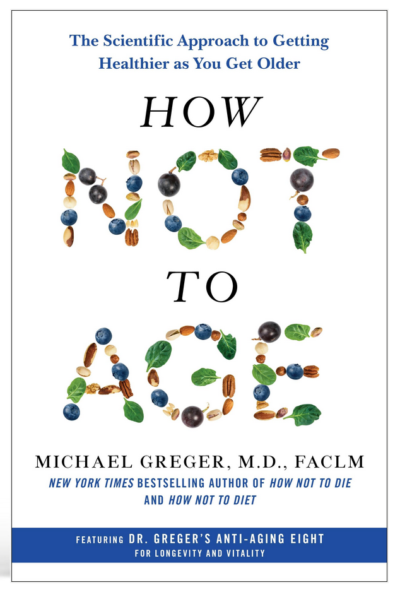Edited by Cristin Tighe and Christine Wood
Part of the BirthWorks Common Sense Nutrition program
From the moment of birth, parents want to give their babies a healthy, long life. For our children and ourselves, the foods we eat and how they are cooked matter to our health now and in the future. Some processed foods and foods that are cooked—especially with high, dry heat—are high in “AGEs”. Over time, harmful AGEs accumulate and stiffen body tissues causing illness. Therefore, everyone—adults, children, and babies—benefits by decreasing AGE products in their diets.
| Parents have the right to make choices for their baby’s wellness based on evidence. Sadly, research shows infant formulas have high levels of harmful AGEs due to the production process. |
AGEs Defined
What are AGEs? AGE stands for advanced glycation end–products (AGEs) that are found in the human body. AGEs are formed internally in the body, but at a slow and continuous rate, and what we ingest impacts the balance of AGEs. Accumulation of too many harmful AGEs over time is often irreversible and accelerates negative health issues. They cause oxidative stress and inflammation leading to degenerative health like kidney disease, diabetes and cardiovascular disease. It is concerning to know that consuming certain foods that increase damaging AGEs in our bodies negatively impacts our lifespan—contributing to aging!1 Harmful AGEs are a group of compounds formed in higher heat-processed foods. For example, animal-derived foods (which are often higher in fat and protein) are generally AGE–rich and prone to further AGE formation when cooked at higher temperatures. AGEs are formed “When muscle cells are exposed to the high temperatures of flames, they rupture and out spill highly reactive amino acids that combine with blood and body sugars to form AGEs.”2
It is empowering to understand that if we reduce the consumption of high–AGE foods—and use less high–AGE cooking methods that cause less accumulation—we reduce toxins in our bodies! The way we cook matters to our health—a simple step to take is to avoid using high dry heat in food preparation. Foods high in protein and sugar, when cooked at high temperatures, lead to stiffened body tissues (glycation process). It is healthier to cook food with moisture.
| Baby formulas are often dairy milk-based, and a recent study found something surprising—the dairy milk-based infant formula Enfamil has nearly 100x more AGEs than human breast milk!3 Parents who decide not to breastfeed are (likely without being aware) impacting the longevity of their babies’ lives from those early days. |
The Maillard Reaction and its Danger in Our Bodies
In 1912, the French chemist Louis Camille Maillard discovered that when proteins and sugar mixtures are heated, they turn brown. Since then, over 50,000 scientific papers have been published about this “Maillard Reaction” —a process that occurs only when sugars bind with proteins.4 In this reaction, when amino acids from proteins are involved, AGEs are created. (Caramelization may look, smell, and taste similar to the Maillard Reaction, but it is from sugar alone, not protein interaction.)
Why does this matter to human health? Glycation, a process where proteins cross-link together, involves the Maillard reaction and is a fundamental mechanism involved in our aging. AGEs are proteins or lipids that become glycated due to exposure to sugars—the higher the blood sugars are, the more glycated the proteins are. Glycation stiffens tissues—especially our arteries and the heart muscle itself.5 This effect of systemic stiffening impairs the flow of body fluids. Optimal body function requires little to no restriction in body fluid flow. The healthiest bodies have fluids flowing freely through blood vessels that have elasticity and tonicity. (These vessels are flexible, allowing fluids to move through unobstructed.) Healthy flow means we also feel better physically.
Too many AGEs result in high blood pressure, peripheral artery disease, heart disease, and even cancer! For example, breast tissue stiffness is associated with an increased risk of breast cancer. Population studies showed that those with elevated AGEs in their blood are also at greater risk for anemia, cartilage stiffness, chronic kidney disease, osteoarthritis, and osteoporosis as well as adverse effects on their muscles, mortality, and minds. The reduction of food-derived AGEs is even seen as an effective and good strategy to combat our dementia epidemic.6
RAGEs Impact Health in a More Complex Way
What are RAGEs? RAGEs are the receptors for advanced glycation end products (AGEs). There are two types—sRAGEs are beneficial defense and mRAGEs are not. It is the balance that impacts disease outcomes. It is known that besides sticking our proteins together, mRAGEs can also trigger chronic, systemic inflammation. This systemic inflammation effect is where inflammatory genes are triggered.7 Inflammation leads to a cyclical feedback loop that can have profound pathological effects. This systemic effect includes diseases of the bones, and joints, muscle wasting, impaired wound healing, cataracts, and more. As one pathologist put it, “It is hard to find an age-related disease that AGEs are not involved.”8
Research on Foods and Detrimental AGEs
Michael Greger, MD and author of the book How Not To Age, says that our exposure to AGEs is more from what we eat than what we produce in our bodies. To reduce the AGE toxins, we need to eliminate high-AGE cooking methods and high-AGE foods. You won’t be surprised to know that the lowest levels of AGEs are found in fruits, vegetables, whole grains, and milk.
In one study that Dr. Greger mentions, over 500 foods were tested for detrimental AGEs. The highest levels were found in “high-heat-treated meat and more generally in animal-derived foods that are high in fat and protein”9. Lower levels were found in vegetables, whole grains, fruits, and milk-based products—“except for Enfamil [baby formula] which has over 100x more AGEs than human breast milk.”10 Based on the large AGEs food database, among the worst were meat and highly processed foods like ingredients in breakfast cereals; but poultry was the worst overall, containing about 20% more AGEs than beef in general. Including non-meat items, poultry products ranked the highest (at the top was oven-fried chicken breast).11 The body reacts quickly to the food it consumes. It was found that a single meal of broiled chicken caused a “profound impairment” of artery function within hours compared to eating the same amount of boiled chicken.12
Cooking Methods Matter
The researchers in the study concluded that AGE accumulation could be cut nearly in half simply by using moist heat cooking methods rather than dry heat. The study found that high dry-heating methods are the most harmful resulting in the most AGEs, with oven-cooked meat worse than deep-frying, which is worse than broiling, which is worse than roasting, etc.. (Microwaving from scratch (versus reheating food) was felt to be on par with boiling.) Therefore, boiled beef has 3x fewer AGEs than broiled beef. Boiled chicken has 5x fewer AGEs than broiled chicken. Boiled eggs have nearly 6x fewer than fried eggs.
WORST (higher heat) > > > BETTER (low or no heat)
oven-cooked > deep-fry > broil > roast > boil (or microwave) > poach > stew > steam
So, in general, the lower the heat, the less accumulation of AGEs. (Imagine your body heated to 200°F or 400°F (~95°C or 200°C)! That is what happens when meat is put into the oven.) The safer way to cook meat is using moist lower temperatures such as in boiling, poaching, stewing, and steaming. In general, choose moist cooking methods rather than high, dry heat to decrease AGE production. And, of course, choosing healthy raw foods includes many benefits.
Practical ways to lessen disease and the AGEs/aging impact involve daily choices. Good choices around cooking methods (moist heat, shorter cooking times, lower temperatures), adding in acid (like marinating with lemon or vinegar before cooking), and eating a diet rich in carbohydrates (vegetables, fruits, and whole grains versus a meat-based diet) can make a difference now and later for health.
| Infant formula processing most often involves heat treatments (for microbial inactivation and powder production) which deteriorates quality due to nutritive loss and production of harmful AGEs.13 Trying to replicate mother’s milk is an ongoing experiment that has known negative effects on babies’ health. Consider breastmilk banks, if needed. |
Empowering Nutrition Choices for Healthiest Outcomes
Here are some ways to consider reducing harmful AGE formation in your body:
- Choose foods low in AGEs—not processed and cooked with low, moist heat.
- Decrease sugar intake in your diet.
- Prioritize fruits, vegetables, whole grains, and lean proteins.
- Limit processed and sugary foods.
- Eat blueberries—they inhibit AGE production.
- Eat nuts, like almonds or walnuts, as they slow down sugar absorption in the bloodstream and help stabilize blood sugar levels.
- Reduce fat content—high-fat meals with AGEs increase blood levels more than low-fat meals with the same AGE content.
- Consider choosing low–fat cheese.
- Decide to reduce or stop eating meat and poultry (or marinate with lemon juice or vinegar).
Eating plant-based foods is a key way to have less body inflammation and less free radicals. Whole grains, fruits, and vegetables (even if cooked) have lower AGE levels. A vegetarian or vegan diet means fewer harmful AGEs and better health outcomes. Remember, AGEs are proteins or lipids that become glycated due to exposure to sugars—the higher blood sugars are, the more glycated proteins are. We are what we eat. Since AGES are hard to get rid of, and accumulate over the decades, changing your diet and ways of cooking earlier is most advantageous to a life of good health. Take the first step now–to a healthier you–by decreasing AGEs in your body.
Many people have eaten foods high in AGEs throughout their lives. What we eat today also makes a big difference. Since AGEs are just one factor in health and aging, it is also key to consider overall lifestyle choices and holistic nutrition. The human body is precious, and we must take good care of it to be healthy.
Research shows that healthy lifestyle choices can reduce stress and significantly impact wellness. These include good hydration, positive sleep habits, exercise, time outside in nature, relaxation, doing things you love, enjoyable work, and connecting to and enjoying people in your family and community. Take steps now to make the best, informed choices, so everyone—adults, children, and babies—can be healthier and live as long as possible.
| If you are a new mother, decide to breastfeed your baby— so you will not have to worry about unnecessarily increasing their AGEs. If you are not breastfeeding, avoid Enfamil infant formula. Do research on other options. Stay tuned for a future blog about ways to choose the best formula (if breastfeeding is not an option). |
BirthWorks is happy to offer this educational information as part of our Common Sense Nutrition program. Learn more about AGEs or Dr. Michael Greger’s peer-reviewed anti-aging medical research on nutrition and diet at www.nutritionFacts.org. Peer-reviewed anti-aging research shows that chronic illness, and avoiding the diseases most commonly encountered in our current time, can be regulated by dietary and lifestyle patterns! Learn simple tools to be healthy and feel younger like: ways to disrupt the eleven pathways causing cellular aging, preserve body functions, and keep physical and mental energy up.
Footnotes:
- Sadowska-Bartosz I, Bartosz G. Effect of glycation inhibitors on aging and age-related diseases. Mech Ageing Dev. 2016: 160:1-18.
- Bettiga A, Fiorio F, Di Marco F, et al. The modern western diet rich in advanced age glycation end-products AGES: an overview of its impact on obesity and early progression of renal pathology. 2019 July 30; 11(8);1748. Doi: 10.3390/nu11081748.
- Goldberg T, Cai W, Peppa M, et al. Advanced glycoxidation end products in commonly consumed foods. J Am Diet Assoc; 2004:104(8);1287-91.
- Hellwig M, Henle T. Baking, aging, diabetes: a short history of the Maillard reaction. Angew Chem Int Ed. 2014;53(39): 10316-29.
- Greger, Michael M.D. F A C L M, How Not to Age: The Scientific Approach to Getting Healthier as You Get Older. Flatiron Books, New York. 2023. p. 54-55.
- Cai W, Uribarri J, Zhu L, et al. Oral glycotoxins are a modifiable cause of dementia and metabolic syndrome in mice and humans. Proc. Natl Acad Sci U.S.A. 2014;111(13);4940-5
- Greger, Michael M.D. F A C L M, How Not to Age: The Scientific Approach to Getting Healthier as You Get Older. Flatiron Books, New York. 2023. p. 55.
- Greger, M. Ibid p. 57.
- Goldberg T, Cai W, Peppa M, et al. Advanced glycoxidation end products in commonly consumed foods. J Am Diet Assoc; 2004:104(8);1287-91.
- Goldberg T, Cai W, Peppa M, et al. Ibid
- Uribarri J, Woodruff S, Goodman S, et al. Advanced glycation end products in foods and a practical guide to their reduction in the diet. J Am Diet Assoc.210;110(6),911-6.e12.
- Uribarri J, Woodruff S, Goodman S, et al. Advanced glycation end products in foods and a practical guide to their reduction in the diet. J Am Diet Assoc.210;110(6),911-6.e12.
- Bakshi, Shiva et al. A comprehensive review on infant formula: nutritional and functional constituents, recent trends in processing and its impact on infants’ gut microbiota, Front Nutr. 2023 Jun 21;10:1194679. doi: 10.3389/fnut.2023.1194679



